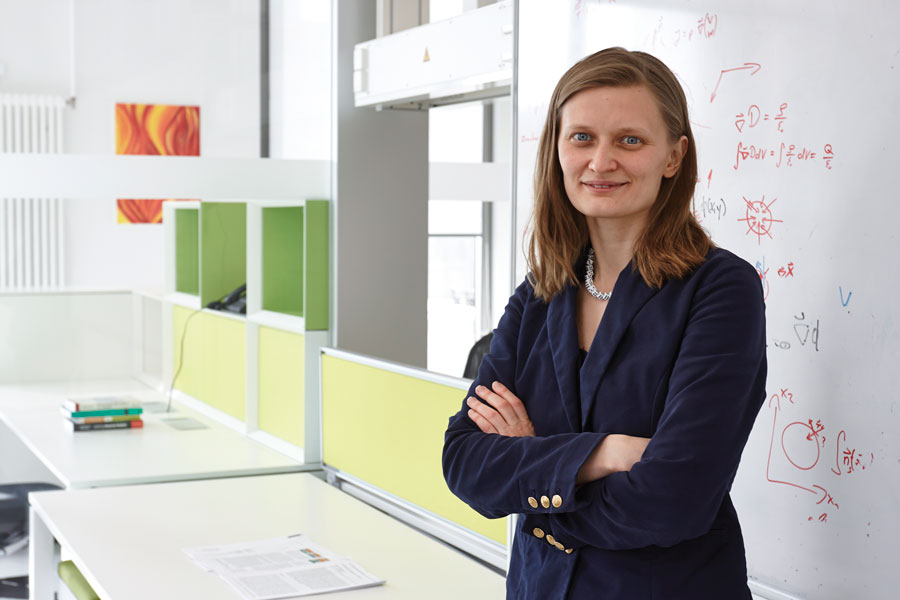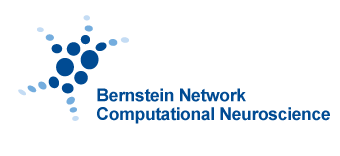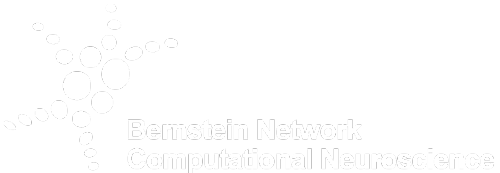Chief goal: cracking the neural code
Tatjana Tchumatchenko compares modern-day brain research to astronomy at Einstein’s times. Her chief goal is to crack the neural code.

Tatjana Tchumatchenko, © Max-Planck-Institut für Hirnforschung / Jürgen Lecher
/BN, C. Duppé/ At the beginning of the 20th century, astronomy underwent a serious transition which helped to contextualise celestial observations and underpin the findings by mathematical theories. To Tchumatchenko, brain research of the 21st century is on the verge of a similar transition. Her long-term goal is to establish a mathematical theory for neuronal networks of the brain. In her opinion, “we are closer than ever of seeing this dream of humankind come true”.
Tchumatchenko is a soft-spoken scientist who is dedicated to basic research. She is a matter-of-fact person firmly grounded in mathematics which remains the crucial foundation of her research. At the age of 32, the physicist became group leader at the Max Planck Institute for Brain Research in Frankfurt a. M. Three years later, she was awarded the Heinz Maier-Leibnitz Prize of the German Research Foundation DFG. In the laudatory speech, her work was praised particularly for its “high originality and creativity as much as the mathematical depth and width of the methods used.”1 In addition, the jury celebrated her writing for its content and style – a particularly nice compliment for a natural scientist whose subtle sense of humour is not least exemplified in the description of how to find her group: on the website tchumatchenko.de, it says: “You know you found the ‘Theory of Neural Dynamics Group’ when you spot the whiteboards full of equations.”
Tchumatchenko’s interests demonstrate that she thinks beyond the boundaries of formulas and mathematical calculation. Despite being a theoretical scientist, she never loses sight of possible applications. This makes her a particularly exciting interview partner, who is fully aware of the potential of computational neuroscience as an interdisciplinary field of research. She describes her work as follows: “We investigate the computations in neuronal networks and ask how the transfer of information, memory or any other function emerges. We try, for instance, to decipher how information is transferred from neuron to neuron inside the brain.” Apart from this fascinating fundamental question, her work also adds to the general understanding of information transfer in biological as well as in artificial neuronal networks; moreover, it shows the versatility of Tchumatchenko’s research.
The jury of the Leibnitz Prize took the same point of view. In particular, the fact that Tchumatchenko’s research has many different applications makes her a “role model for a successful scientist working across classic disciplinary boundaries.”2 For example, one of her papers focuses on the complex interaction between the dynamics of fluids and sound conduction of the bones in the ear. Her calculations show how the basilar membrane, the membrane sensitive to auditory stimuli, can be stimulated in two different ways to elicit the same reactions. Tchumatchenko’s findings and calculations have helped to systematically optimize headphones and hearing aids for hearing impaired patients.
Another recent application of her research was the use of algorithms by banks wanting to assess the information flow of their customer networks. A mathematician in Paris, for instance, uses Tchumatchenko’s formula to conduct risk analyses in the finance sector. In an interview with the magazine Cicero, Tchumatchenko stated matter-of-factly that they simply shared a common interest in the problem.3 At times, cross-disciplinary cooperation seems to be quite easygoing.
Artificial intelligence is another topic the physicist Tchumatchenko takes a big interest in. To her, mathematics is a kind of common language able to translate insights about biological neuronal networks into specific applications for artificial intelligence. To her, comprehending basic parameters is always the first step towards successful research. She often finds the application for her mathematical algorithms in cross-disciplinary cooperation. Working with neurologists, she marvels at the fact that “one knows so much about the individual molecules involved but it is unclear how the neuronal network functions as a whole.” Particularly in medical research, this knowledge would immensely help to better simulate signal propagation in the brain. Furthermore, such knowledge could help to predict when an inflammation advances unimpeded and when it halts. To Tchumatchenko, neuronal network models are thus indispensable for the comprehension of biological processes, particularly of the brain.
She has already come closer to her life goal of establishing a mathematical theory for neuronal networks in the brain: “We are able to describe the information transfer from neuron to neuron. In the years to come, we will extend this knowledge and hopefully find better therapies for certain neurological diseases and make progress in machine learning.”
Tchumatchenko remains true to herself and to mathematical science, no matter what she does. From early on, her passion for the natural sciences has been a guiding factor in her life, a life that brought her to Germany at the age of 13 when she and her family emigrated from the Ukraine. Despite many obstacles and many prejudices during her school career, she received a scholarship of the German Academic Scholarship Foundation to start her tertiary education. This might have contributed to her being portrayed – together with two other young women her age – as examples of the ‘Generation Confidence’ by the magazine SPIEGEL in 2004. Recently, the magazine FOKUS recognized her as one of the top 25 professionals shaping the future of our society – a great honor for Tchumatchenko’s scientific achievements, which usually begin calmly and unexitedly at the ‘whiteboards at the end of the corridor’ before they take their full effect in the interaction with others.
Published in the Bernstein Feature. 2018. Next Gen/d/eration Computational Neuroscience, S.16-19.
References
1, 2 Deutsche Forschungsgemeinschaft. „Verleihung des Heinz-Maier-Leibnitz-Preises 2016. Laudatio auf die Preisträgerin Dr. Tatjana Tchumatchenko.“ Bonn, Mai 2016.
3 Dannenberg, Sophie. „Spikes was sonst?“. Cicero, 2017 (3): 2.




